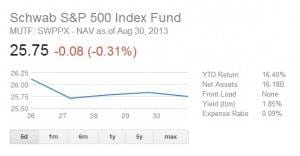Most people sign up for a 401k plan and never look at it again. To get the most growth out of your 401k, you should be involved with your investments and balance it once a year. Here are some strategic methods to get the most out of your 401k and keep it in ideal shape for steady growth.
It would be wonderful if every investment could produce 25% growth. Unfortunately, this isn’t realistic, even in the best of economic times. The best strategy is to match your employer’s contribution and diversify your 401k investments according to the basic principles of investing for long-term growth keeping a steady eye on its progress.
UNDERSTANDING YOUR EMPLOYER MATCH
Since a 401k is an employer-sponsored program, you want to know what the percentage of the matching contribution is and at the least, match it. If your company matches at 6%, then you should match 6% of your earnings. Let’s say 6% of your income each month is $75, your employer will contribute $75 toward your 401k for that month which equals $150 total for the month. In 2013, you can contribute up to $17,500 in pre-tax dollars toward your 401k.
HOW TO DIVERSIFY YOUR 401K
Typically, when you sign up, your employer will automatically invest in their company stock. If you are familiar with the catastrophe that surrounded the Enron Corporation, leaving all of your money in the company’s stock is not a good idea. Here are the steps you should take to properly manage your 401k and have a healthy mix of investments:
- Subtract 100 from your age and this is the percentage you should invest in stocks. For those of you in your 20s-40s, you should invest 60-80% (depending on your age and what you are comfortable with in risk) in stocks. For example, a 38-year-old can start at 62% as the baseline. Depending on how comfortable you are with risk, you may bump it up to 70%, or more conservative folks can choose 55%.
- Let’s say the same 38-year-old decides on investing 65% toward stocks, then they should diversify that amount between High, medium, small cap and international stocks. These options depend on your employer’s funding carrier (such as Fidelity, Merrill Lynch, etc). You don’t have to do a lot of research on this – the key is to diversify. Index or spider stocks are typically a good stock option because they are already invested in 100s of companies as opposed to a single stock. A sample would look like: High – 15%, Medium – 15%, Small – 15% and International – 20% which equals 65% of your 401k contributions.
- Now, what do you do with the remaining 35% of your 401k? This is where a big part of the diversification is stabilized, by investing in low risk, more conservative options like bonds, real estate or other similar options offered through your employer’s program. You could put 20% in bonds (diversifying within it if you wish) and the remaining 15% in real estate.
The entire 401k, fully invested from the above numbers would appear as the following:
Total including your employer’s contribution + your contribution: 65% + 35% = 100%
65% in Stocks
High-cap: 15%
Medium-cap: 15%
Small-cap: 15%
International: 20%
35% in Low Risk Investments
Bonds: 20%
Real Estate: 15%
REBALANCE YOUR 401K ONCE A YEAR
Now that you have a diversified mix of investments within your 401k, you don’t have to monitor them as if you are a day-trader. It is recommended to rebalance your initial percentages once a year. All this means is the natural shift of the markets will cause the percentages to stray past your initial settings. For example, you may have set your International stock to 15% in January and by December it drifted to 18.7%. You just reset it back to 15% and do the same for your other investments.
Ultimately, there isn’t a whole lot you have to do to manage your 401k and keep it healthy and steadily growing for you. With that said, you should always be mindful of your long-term goals, how close you are to retirement age, diversify your investments and rebalance from time-to-time.
Maxime Rieman is a writer for NerdWallet, a financial literacy site that helps consumers find information on their retirement and other financial investments.

